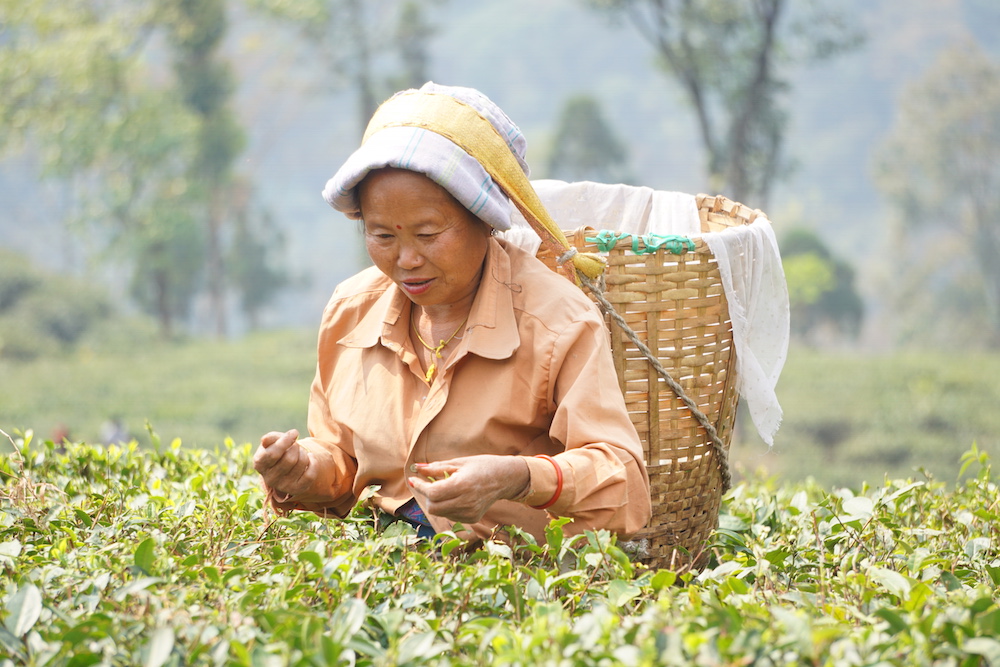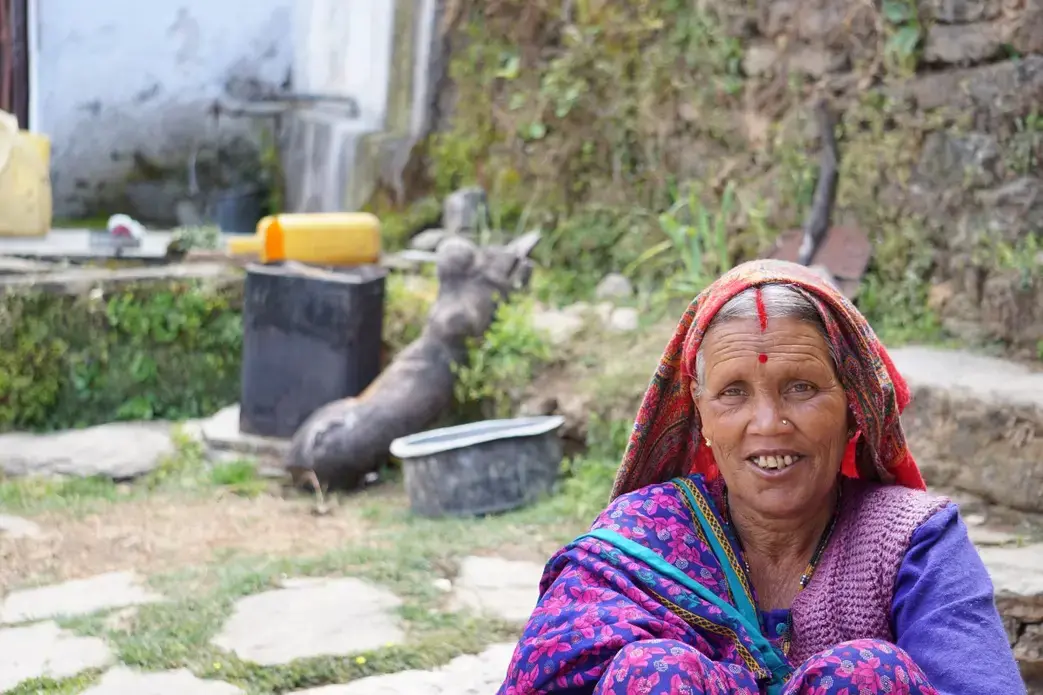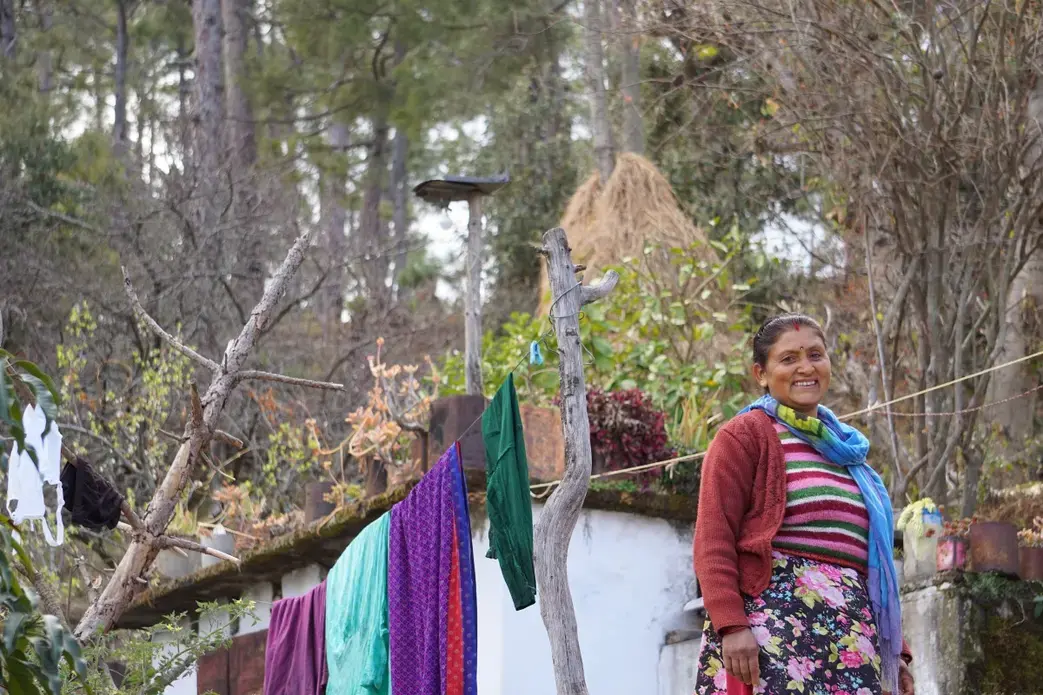
ALMORA DISTRICT, UTTARAKHAND — Shanti Devi is racing around her farm in her sari, shooting at monkeys with a slingshot. Her tiny plot, at nearly 7,000 feet, has a glorious view across a tiered valley to the Himalayas. She grows herbs, onions and potatoes, and looks after wild apricot trees.
Devi works the farm alone — her husband works in a nearby village and her children work at jobs in Delhi. For additional income, she sells apricot shells to a local non-profit, which turns them into beauty products for markets in north India and Delhi. Her goal is simple: She wants to earn enough on the farm so her family can afford to return. Monkeys that pillage the fruit deprive her of income she badly needs.
“If they eat it all, what will I have left over?” she asks in Hindi.
New narrative
Women like Devi are changing the storyline in India’s remote rural regions, where in many places farming doesn’t produce even enough food for families. For decades, men and young people have left their small plots and migrated to India’s cities. The average farmer “is a 50-plus-year-old woman in the hills,” says Kalyan Paul, co-founder of the Pan Himalayan Grassroots Development Foundation, an organization based in Almora, Uttarakhand, the northern Indian state where Devi farms.
Those women are not letting their farms and villages slide into neglect. Rather, these unlikely entrepreneurs are leading a rural revival. Devi is part of a grassroots, women-led movement that is finding new sources of income. They are restoring the land with regenerative farming techniques that supply the country’s metro areas with organic products, medicinal plants and herbs.
Working cooperatively and newly networked with India’s urban centers and global markets, small-scale farmers, primarily women, represent a new force in Indian agriculture. Growing these women-led efforts will be an important part of meeting Sustainable Development Goal №13 for climate action (including “Strengthen resilience and adaptive capacity to climate-related hazards”) and №15 for “Life on Land” (including “promote the implementation of sustainable management of all types of forests, halt deforestation, restore degraded forests”).
Feminization of agriculture
Women have always worked hard in the Indian Himalayas. A pair of bullocks on a one-hectare farm works a bit over 1,000 hours a year, according to a study by the Food and Agriculture Organization. A man, if he’s still on the farm, might work about 1,200 hours. A woman? 3,485 hours.
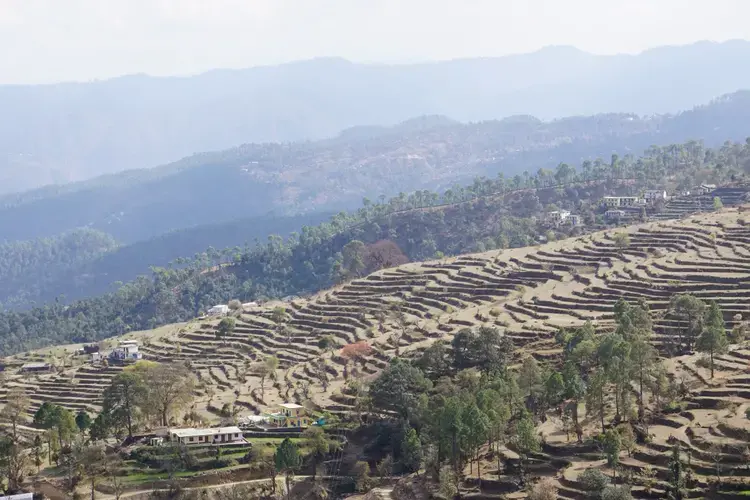
Increasingly, rural households are fragmented, as women work the farms while husbands and children, like Devi’s, leave for better-paying jobs in the cities. This leaves women as the dominant force in the countryside. More than 70 percent of women in the state work in agriculture, says Anita Paul, Kalyan’s wife and co-founder of the Pan Himalayan Grassroots Development Foundation. While in the country as a whole, nearly half of all self-employed farmers are women. The development community calls this trend, “the feminization of agriculture.”
“The feminization of agriculture has been proceeding gradually and incrementally,” says Anirudh Krishna, a professor of public policy at Duke University and the author of The Broken Ladder, a new book documenting the challenges of modern-day India. “It was known a generation earlier. But its extent has become vastly larger.”
Sugandha Munshi, a gender specialist at the International Rice Institute and a native of Bihar, one of India’s poorest states, has traversed the country, meeting with women farmers to understand their challenges and identify solutions. She sees a change happening: the government of India is finally recognizing these female farmers because the United Nations appointed October 15th as International Day of the Female Farmer — a gesture, she says, “gives a lot of hope” to women farmers whom she refers to as the “unsung heroes of Indian agriculture.”
Beyond government recognition, grassroots movements, led by self-help groups, Munshi notes, “are bringing [a] silent revolution in this context. When the women farmers come together they have better bargaining power.”
Constraint-driven
Kalyan Paul, of the Pan Himalayan Grassroots Development Foundation, and his wife, Anita, have been working for two decades to revive farming economies and ecosystems in the mountains. He is spearheading a new partnership with the FAO to take mountain products such as Himalayan chamomile tea, sticky red rice, pink sticky rice and other products to global markets, identified with a new logo.
Finding new or expanded markets for farm products from the region is key to its economic revival. But transporting fresh produce is difficult given the lengthy travel times and limited capacity for refrigeration. (A 380-kilometer trip to Delhi can take more than 12 hours by car.) That’s why non-profits like Paul’s focus on items with a long shelf life: grains, pulses, herbs, teas, and cosmetics.
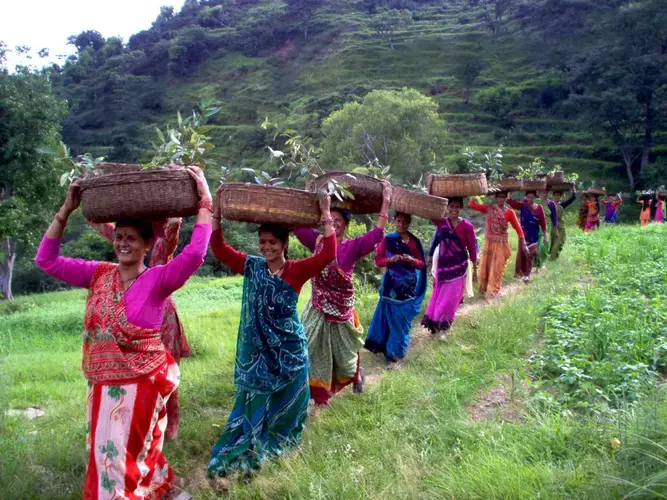
The women in the company come from more than 200 villages across the Gagas and the Kosi river basins. They have formed self-help groups of 10 to 20 women who convene regularly to help each other with financial issues, to lend money through a collective fund, and to educate one another on day-to-day matters such as farming, sanitation, and water collection.
Besant Devi, a member of Mahila Umang, has seen the effects first-hand. A decade ago, before joining the cooperative, she says, her family had no food at home, three children to feed, and debt of 20,000 Rs. (about $300). Today, thanks to the help of Mahila Umang, she’s been able to erase that debt. She makes pickles and preserves with local fruits such as apricots, plums, apples, and pears.
Mahila Umang is one of the largest cooperatives in the region and employs the most women. Other grassroots organizations such as Aarohi and Chirag also promote organic farm-based products from Uttarakhand.
The cooperatives promote the organic nature of traditional agriculture in the hills; local farmers were often too poor to buy chemical fertilizers and pesticides. In addition, there’s a concerted effort to encourage organic methods when cultivating new crops. Nearby states such as Sikkim, Himachal Pradesh, and Meghalaya have adopted state-level legislation and programs to encourage organic farming techniques. Sikkim, a small eastern state, was the first to go 100 percent organic under mandates from the local government. Given its small size and single-party politics, it was an easier conversion than large, sprawling regions such as Uttarakhand and Himachal Pradesh.
“Everyone in Bangalore, Delhi, Mumbai is waking up to organic. So this could be the right opportunity to save the hills and get some of these kids to come back,” Paul says.

Restoring the hills
Another way women are regenerating the rural economy is by tackling the biggest threats to farming in the Himalayas and its foothills: long-term degradation of the mountain environment, soil erosion and other problems that are being aggravated by climate change.
In addition to selling farm products, the Mahila Umang co-op is developing nurseries and planting native trees and shrubs — members have planted more than a million native oak and other saplings in the Gagas river basin. Each year, members plant another 5,000 saplings, including apricots whose fruit they can harvest and eat or sell for additional income.
The plantings aim to reverse a problem that goes back to the colonial period. The British replaced native oaks with pine trees, whose needles prevented the soil from absorbing rain and didn’t replenish nutrients the way oak leaves did. Climate change has added to the problems by altering rainfall patterns. Winter rains have nearly disappeared and water shortages are becoming more common. (There is often no water to flush a toilet, or in the taps as I learned on my visit.) Summer monsoons now bring deluges that cause landslides and floods. In 2013, flooding in the Uttarakhand town of Kedarnath killed nearly 6,000 people.
Organizing women in the co-ops and creating markets for their produce creates a virtuous cycle that restores the land and improves livelihoods.
“We have to find a balance between economics and ecology,” Paul says. “We have to try at least and push ourselves in the right direction, even if it takes years, decades to restore the balance. Women play a big part in making that happen.”
Rural revival
In northern India, as you weave up the winding roads and leave the plains of Uttar Pradesh behind, small plots of land appear, carved into the sides of mountains. Again and again, you see women bent over, dressed in saris and wrapped in shawls, tending to grain fields of amaranth, rye and barley. On these compact plots, often less than a hectare, these women try to grow as much as possible.
Like many of them, Devi is alone on her farm for most of the year while her family are away working at their non-farming jobs, “anything that would make them more money than this,” she says. Their absence is bittersweet, she says. They are making a good living, but they have to leave the farm to do it.
Her small plot produces barely enough for her to eat. A local non-profit, Aarohi, makes it possible for her to bring in a little extra income by buying wild apricots that she gathers from her land. Aarohi pays Devi by the kilogram and processes the apricot shells for facial and body scrubs and the seeds into an oil. In addition to giving local women a small supplemental income, the non-profit uses proceeds from the sales to help finance a health-care program for women in the Almora district.
If farming is ever going to attract men and young people back to the land, it will depend on women like Devi to make it a successful, alluring model.


